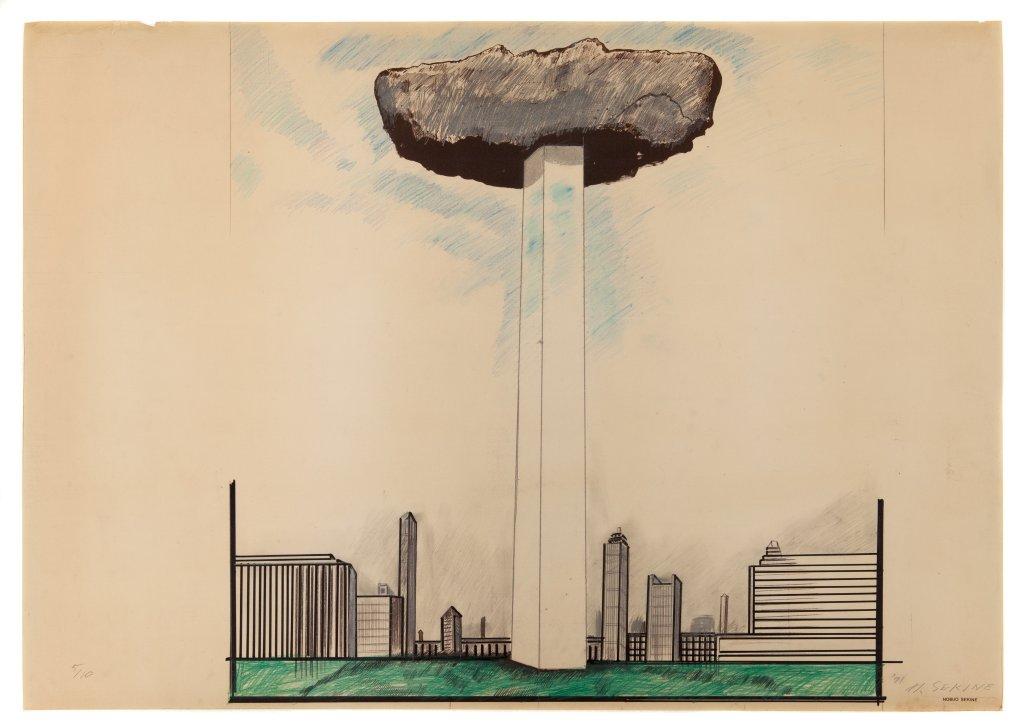In 1968, with the creation of Phase – Mother Earth, Nobuo Sekine (along with Lee Ufan) founded the Mono-ha movement (translated as School of Things). Characterized by a juxtaposition of natural and manmade materials, their work sought to create relationships between these materials and objects in real space, rather than to sculpt them into something entirely new and different. In this sketch for his piece Phase of Nothingness, Sekine depicts a large stone atop a reflective, stainless steel column. This work was recently acquired by The Rachofsky Collection and is installed just outside the north stair of The Rachofsky House. The stone’s weight and raw, natural quality float about the highly polished stainless steel surface that dynamically reflects the landscape as the viewer moves around it. In this sketch, one can see how Sekine envisioned the work as much larger, towering over the architectural landscape of a city. Sekine’s work has been subject of numerous solo exhibitions at institutions such as Shanghai Sculpture Space; Seoul Art Center; Kawagoe City Art Museum, Saitama; Museum Shokyodo, Aichi; and Louisiana Museum of Art, Humlebæk. His work has been included in a number of group exhibitions, including Munsin Internatinal Sculpture Symposium, Munsin Art Museum, Masan; MONO-HA: Reconsideration, The National Museum of Art, Osaka; Century, Tate Modern Art Gallery, London; MONO-HA, Kettles Yard Art Gallery, Cambridge; and Japanese Art After 1945: Scream Against the Sky organized by the Yokohama Museum of Art, which traveled to Guggenheim Museum, New York, and the San Francisco Museum of Modern Art. His work is also included in the upcoming Tokyo 1955-1970 exhibition that opens this November at the Museum of Modern Art, New York. A number of seminal Sekine works have recently been acquired by the Dallas Museum of Art and were on view this summer in Focus On: Nobuo Sekine.

Nobuo Sekine
PROJETTO SERIES “PHASE OF NOTHINGNESS”
1971
ink, color pencil, and graphite on paper
27 5/8 x 39 1/4 inches
edition 5 of 10